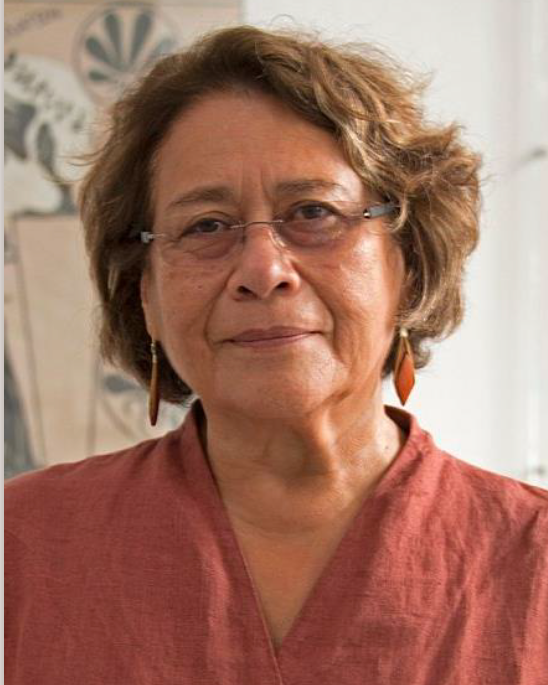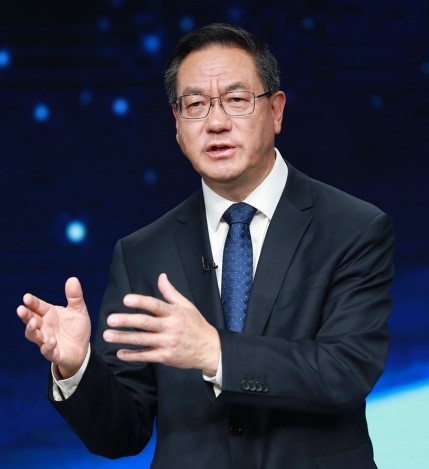Plenary session

The scientific program is complemented by the plenary session taking place on Wednesday afternoon May 28 in room SCHWEITZER (Ground floor), with three speakers. The line-up of the plenary speakers is outstanding and these events are wonderful opportunities to learn and to be inspired. The collective wisdom, perspective, and leadership experience of the three individuals will be a highlight of the conference week.
This central session will continue with the presentation of the E-MRS EU-40 Materials Prize recipient. The latter is a prestigious prize awarded to researchers under 40 who are showing exceptional promise for leadership and have made outstanding and innovative contributions to Materials Research in Europe.
It's hard to imagine a richer offering of speakers. And that's the point of the plenary session: they provide a shared experience for all conference attendees. Plenary session is a time for a break from the details of your week, a time to be stimulated and to reflect on the values that brought us to the field and that continue to motivate us each day.
The social event open to all participants will conclude the plenary session.
Preliminary program
Wednesday May 28 from 16:00 to 19:00
16:00 - Welcome Address by A. Kenyon, E-MRS President
16:10 - Introduction of the first plenary speaker by ..., Conference Chair
16:15 - Prof. Dr. Clivia M. Sotomayor Torres
 |
2 Optomechanics for room-temperature phononic circuits C.M. Sotomayor Torres
|
|
|
We will review results from my groups over the last decade in phononics from two perspectives: the phonon-photon interaction in condensed matter and the possible realisation of room temperature phononic circuits. Biography: Clivia M. Sotomayor Torres obtained her PhD in Physics in 1984 from the University of Manchester, UK. She held tenured academic appointments at Saint Andrews and Glasgow universities in the UK, at Wuppertal University in Germany and was a research professor at the National university of Ireland University College Cork (Tyndall National Institute). From 2007 to 2023 she was an ICREA research professor and group leader of the Phononic and Photonic Nanostructures group at the ICN2 in Spain. Clivia received awards from the Royal Society of Edinburgh, the Nuffield Foundation and an Amelia Earhart Fellowship from ZONTA International (USA). She carries out research in the science and engineering of phononic nanostructures, nanophotonics and thermal transport. In 2020 she was elected to the Academia Europaea. She is holder of an European Research Council advanced grant investigating phonon transport in topological waveguides. Since September 2023 she is the Director General of the International Iberian Nanotechnology Laboratory (INL) in Braga, Portugal, where she has set up a new research group. |
||
16:55 - Introduction of the second plenary speaker by ..., Conference Chair
17:00 - Prof. A. K. Sood (IIsc Bangalore, India)
17:40 - Introduction of the third plenary speaker by ..., Conference Chair
17:45 - Prof. Zhong Lin Wang (Georgia Tech., USA & Beijing Institute of Nanoscience and Nanotechnology, China)
 |
Triboelectric nanogenerators (TENG) for sustainable energy and AI Zhong Lin Wang
|
|
|
Triboelectric nanogenerator (TENG) was invented by Wang’s group in 2012, which is based on the coupling of triboelectrification and electrostatic induction effects for converting mechanical energy into electric power. TENG is playing a vitally important role in the distributed energy and self-powered systems, with applications in internet of things, AL, environmental/infrastructural monitoring, medical science, environmental science, and security. TENG is most effective for utilization of high-entropy energy, which is the random, low-density, low-grade mechanical energy widely-distributed in our living environment and in nature. There are now over 16,000 scientists distributed in 90 countries and regions around the globe who have published papers on TENG. This presentation will first focus on the advances in fundamental science made due to the discovery of TENG. Then we will focus on the potential industrial impacts that have been made by TENG. We will show how this new field will benefit to the sustainable development of humankinds. References: [1] Z.L. Wang et al. , “Nanogenerators: A foundation for high entropy energy and sensing systems”, MRS Bulletin, 50 (2025) 258-270; https://doi.org/10.1557/s43577-024-00858-8 [2] Z.L. Wang “From conctact electrication to triboelectric nanogenerators“ (Review), Report on Progress in Physics, 84 (2021) 096502. [3] Z.L. Wang and A.C. Wang “On the origin of contact electrification“ (Review), Materials Today, 30 (2019) 34-51. [4] S. Lin#, X. Chen#, and Z.L. Wang* “Contact-electrification at liquid-solid interface” (Review), Chemical Review, 122 (2022) 5209–5232. [5] S. Lin, Z.L. Wang* “ The tribovoltaic effect“ (Review), Materials Today, 62 (2023) 111-128. [6] Z. Wang, X. Dong, W. Tang, Z.L. Wang* “Contact-electro-catalysis (CEC)”, Chemical Soc. Review, 53 (2024) 4349 - 4373; https://doi.org/10.1039/D3CS00736G [7] Z.L. Wang “The Maxwell’s equations for a mechano-driven media system (MEs-f-MDMS)“, Advances in Physics: X, 9 (2024) 2354767; https://doi.org/10.1080/23746149.2024.2354767 Biography: Dr. Zhong Lin Wang is a preeminent physicist and materials scientist whose groundbreaking work has revolutionized the fields of nanotechnology, energy harvesting, and self-powered systems. He currently serves as the Director of the Beijing Institute of Nanoenergy and Nanosystems and holds the distinguished titles of Regents' Professor and Hightower Chair (Emeritus) at the Georgia Institute of Technology. Dr. Wang is widely recognized as the pioneer of the nanogenerators field, which has enabled advancements in distributed energy, self-powered sensors, and large-scale blue energy. Additionally, he coined and developed the fields of piezotronics and piezo-phototronics, which have significant implications for third-generation semiconductors. Dr. Wang’s scientific impact is unparalleled. Among 100,000 scientists across all fields worldwide, he has been ranked #1 for single-year scientific impact continuously from 2019 to 2024, #2 in career scientific impact, and #1 in Materials Science. His research has garnered over 480,000 citations on Google Scholar, with an extraordinary h-index of 330, underscoring his immense influence and contributions to science. Throughout his illustrious career, Dr. Wang has received numerous prestigious awards, including the Global Energy Prize (2023), the Albert Einstein World Award of Science (2019), the ENI Award in Energy Frontiers (2018), the James C. McGroddy Prize in New Materials from the American Physical Society (2014), and the MRS Medal from the Materials Research Society (2011). His groundbreaking work has earned him memberships and fellowships in some of the world’s most esteemed scientific academies, including the US National Academy of Inventors, the Chinese Academy of Sciences (as a foreign member), the European Academy of Sciences, the European Academy of Engineering, the Korea Academy of Science and Technology (as a foreign member), the Academia Sinica, and the Canadian Academy of Engineering (as an International Fellow). Wang’s pioneering contributions to nanogenerators, piezotronics, and self-powered systems have not only advanced fundamental science but also paved the way for transformative technologies in energy harvesting, sensing, and semiconductor development. His exceptional scientific impact, numerous accolades, and leadership in the global scientific community underscore his status as one of the most influential materials scientists of our time. |
||
18:25 - Introduction of the fourth plenary speaker by ..., Conference Chair & EU-40 Materials Prize ceremony.
18:30 - EU-40 Materials Prize Recipient
19:00 - End of the Session - Social event open to all participants
Laboratory of Reactions and Process Engineering (LRGP), Nancy, France
guo-hua.hu@univ-lorraine.frDepartment of Chemistry and Materials Science - School of Chemical Engineering - Kemistintie 1 - FI-00076 Aalto, Finland
maarit.karppinen@aalto.fiAnna-Louisa-Karsch-Strasse 2 - 10178 Berlin, Germany
patrick.bressler@mikroelektronik.fraunhofer.deMeitY. Government of India, Hyderabad, Telangana, India
ratheesh@cmet.gov.inInstitute of Inorganic and Materials Chemistry, Greinstraße 6, D-50939 Cologne, Germany
sanjay.mathur@uni-koeln.de